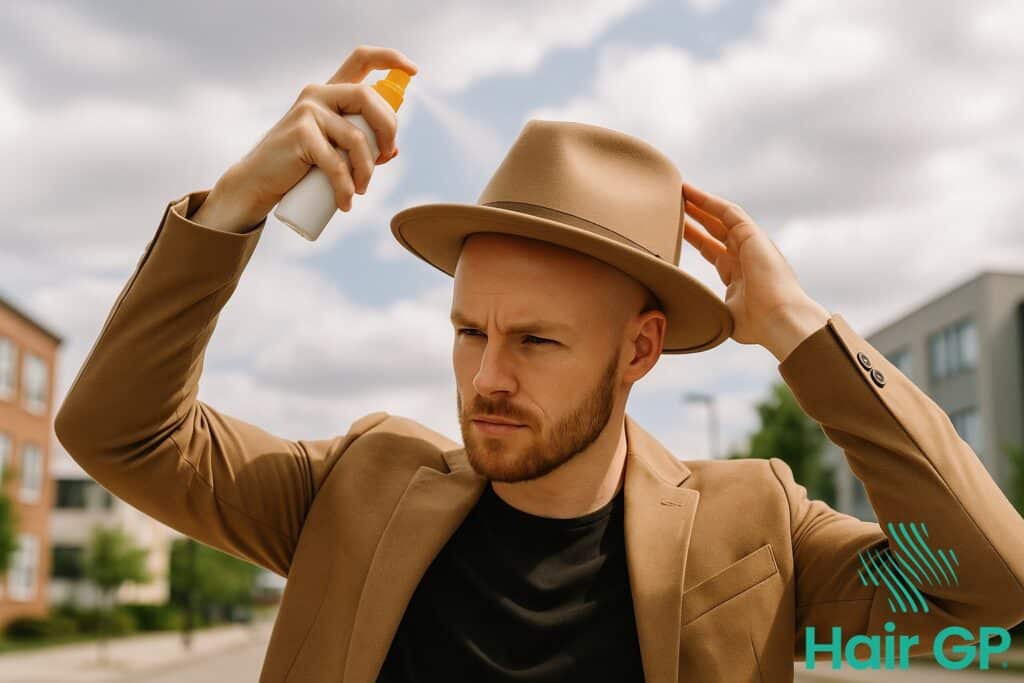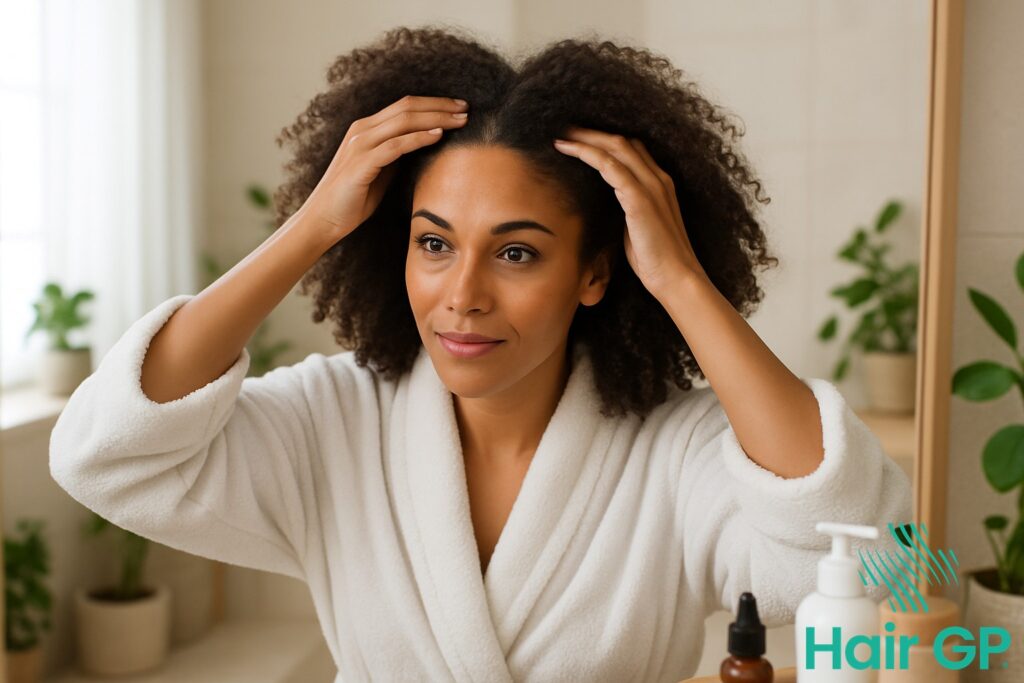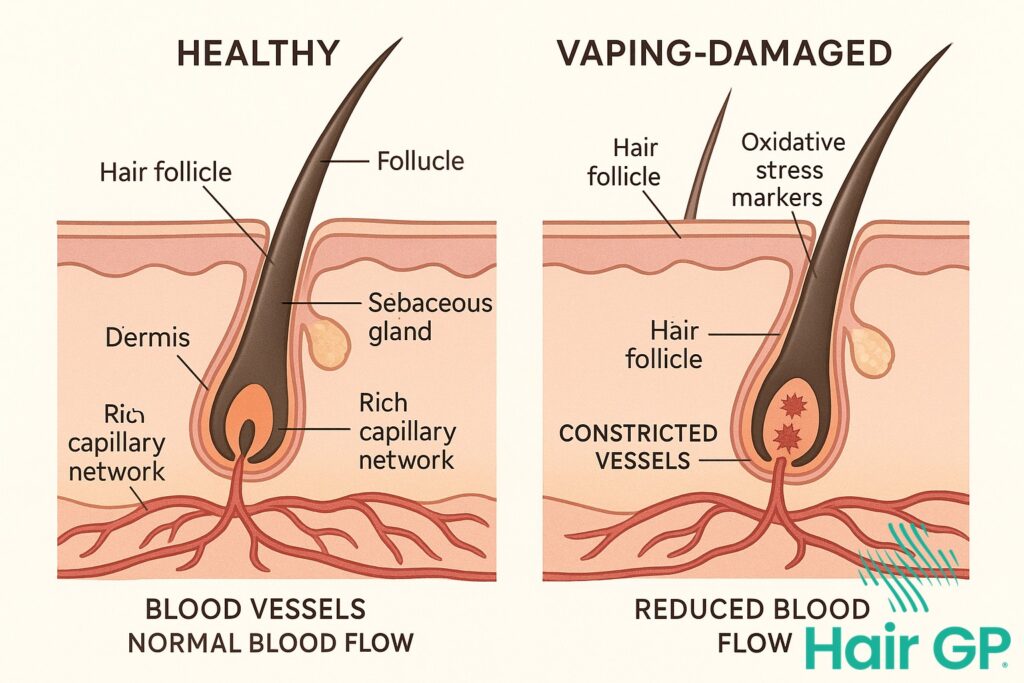Introduction
When you think about sun protection for your scalp, you probably picture yourself on a sunny beach holiday, frantically applying sunscreen to avoid burning. However, protecting your scalp from harmful UV rays isn’t just a seasonal concern—it’s a year-round necessity that many of us overlook. Whether you’re walking to work on a cloudy day or enjoying winter sports, sun damage to your scalp and hair occurs throughout the year, not just during your annual getaway.
This comprehensive guide will help you understand why your scalp remains vulnerable to UV exposure regardless of the season, exploring how environmental factors and everyday activities put you at risk. We’ll delve into the specific ways sun exposure affects both your scalp health and hair quality, from immediate concerns to long-term damage. You’ll discover practical protection strategies suitable for different hair types and lifestyles, ensuring you can keep your hair healthy and your scalp protected every day of the year.
Key Takeaways – TL/DR
- Your scalp needs sun protection year-round, not just during summer holidays or beach trips
- UV damage can cause skin cancer, premature hair thinning, and permanent hair structure damage
- Physical barriers like hats combined with SPF products offer the best scalp protection
- Different hair types require tailored sun protection strategies for optimal results
Why Your Scalp Needs Year-Round Sun Protection
Many people believe that scalp protection is only necessary during bright sunshine or summer months, but this dangerous misconception leaves your scalp vulnerable to year-round UV damage. Research shows that up to 80% of UV rays penetrate through cloud cover, meaning your exposed skin remains at risk even on overcast days [1]. Additionally, UV rays reflect off surfaces like snow, water, and concrete throughout the year, creating multiple exposure pathways that can damage unprotected scalp tissue.
Your scalp faces unique vulnerabilities that make consistent protection essential. The scalp accounts for approximately 6% of melanomas despite representing only 2% of body surface area, with studies indicating that scalp melanomas have poorer prognosis than those occurring elsewhere [2]. Thinning hair, natural parting lines, and crown areas create zones of exposed skin that receive direct UV exposure during everyday outdoor activities. Whether you’re commuting in winter, gardening in spring, or simply running errands on a cloudy autumn day, these vulnerable areas accumulate damage over time. Understanding that UV protection isn’t seasonal but rather a daily necessity helps prevent both immediate damage like sunburn and long-term consequences including premature ageing and skin cancer development on the scalp.

How Sun Damage Affects Your Scalp and Hair Health
UV radiation penetrates deep into your hair structure, breaking down the protective outer layer of hair cuticles and degrading essential proteins. Research demonstrates that prolonged UV exposure causes significant keratin deterioration, leading to weakened hair shafts that become increasingly brittle and prone to breakage [3]. This sun damage manifests visibly as your natural hair colour fades—UV rays oxidise melanin pigments, leaving hair looking dull and lifeless whilst creating unwanted brassy tones.
The structural damage extends beyond aesthetics, causing increased frizz as damaged cuticles fail to lie flat, allowing moisture to escape and creating rough, unmanageable textures. Split ends multiply as weakened hair fibres literally tear apart under environmental stress. Your scalp faces even more serious consequences from UV exposure. Scalp sunburn not only causes immediate pain and peeling but significantly increases melanoma risk—scalp melanomas account for 6% of all melanomas and have particularly poor prognosis due to delayed detection .
Chronic sun exposure damages hair follicles themselves, disrupting the growth cycle and potentially triggering premature hair loss. The delicate skin on your scalp, often forgotten in sun protection routines, remains vulnerable to cumulative photodamage that accelerates ageing and compromises your hair’s foundation.
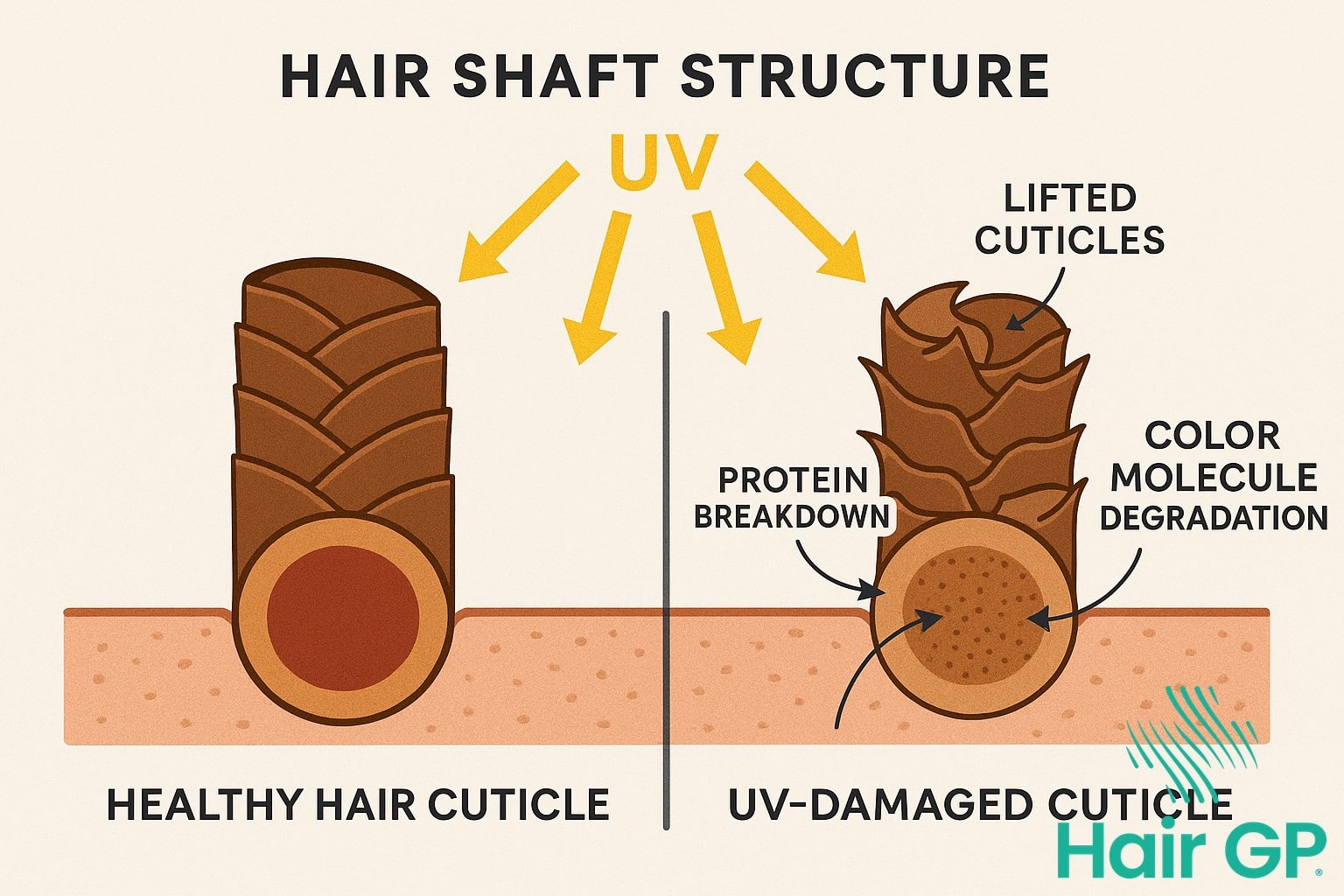
Essential Strategies to Protect Your Scalp and Hair
Protecting your scalp and hair from sun damage requires a multi-layered approach combining physical barriers with appropriate sun protection products. By implementing these practical strategies, you can effectively shield your scalp from harmful UV rays whilst maintaining healthy, styled hair throughout any season.
Physical Barriers: Hats, Scarves, and Smart Styling
The most immediate protection comes from physical barriers, with wide-brimmed hats offering superior coverage compared to caps or visors. A hat with at least a 7.5cm brim provides optimal protection for your scalp, ears, and neck. For those concerned about hair texture, silk scarves offer excellent UV protection without causing frizz or static, making them ideal for wrapping around your head or tying over your hair. Smart styling choices also play a crucial role—braids, buns, and updos naturally minimise scalp exposure whilst looking fashionable. These protective hairstyles work particularly well when combined with a stylish scarf or hat for maximum coverage.
Choosing and Applying Scalp-Friendly Sun Protection
When selecting sunscreen for your scalp, spray formulations prove most effective as they penetrate through hair to reach the skin beneath. Look for broad-spectrum products with SPF 30 or higher, choosing non-greasy, lightweight formulas that won’t weigh your hair down or leave residue. Application requires thoroughness—part your hair in sections and spray directly onto the scalp, ensuring complete coverage. These top tips include reapplying sun cream every two hours during outdoor activities and after swimming or excessive sweating. For thinning hair or exposed partings, consider powder or stick sunscreens for targeted protection without disrupting your style.
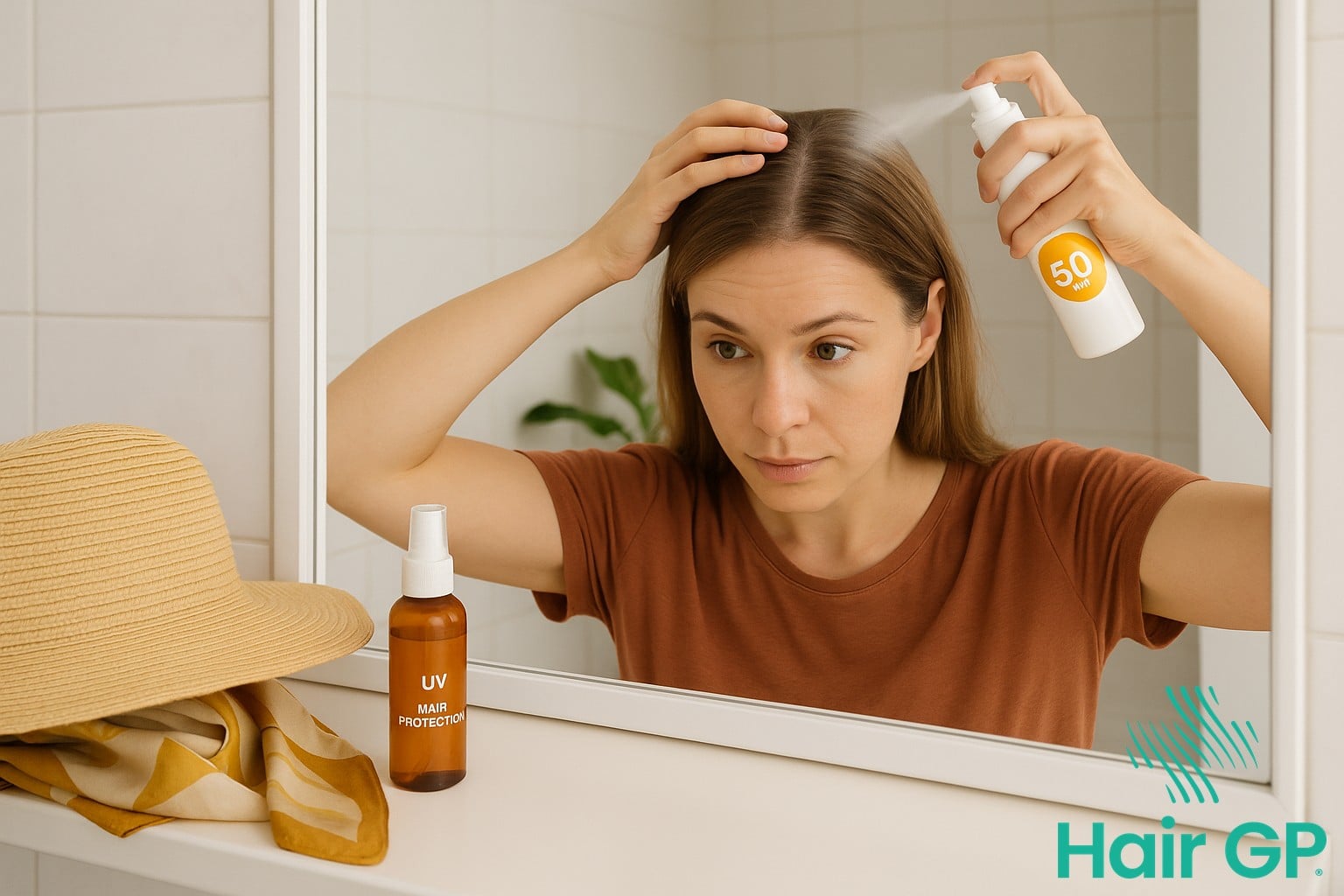
Tailoring Sun Protection to Your Hair Type and Lifestyle
Customising scalp protection requires understanding how different hair types interact with sun protection methods. Fine hair often provides minimal coverage, leaving more scalp exposed to harmful rays, whilst thicker hair may create false security despite gaps at partings and crown areas. Each texture demands a tailored approach that balances effective protection with maintaining hair health and style.
Colour treated hair faces double vulnerability, as chemical processing weakens strands whilst increasing photosensitivity. Those with curls must navigate protection methods that won’t disrupt curl patterns or cause excessive dryness. Heat styling compounds these challenges, as thermal tools can interact negatively with certain sunscreens, creating product buildup or altering hair texture.
Active lifestyles demand adaptable strategies. Swimmers need water-resistant formulas that won’t rinse away, whilst outdoor enthusiasts benefit from lightweight options that won’t feel heavy during physical activity. Consider spray formulations for quick reapplication without disturbing hairstyles, or powder-based products for oily scalps. The key lies in selecting methods that integrate seamlessly into existing routines rather than creating additional steps that discourage consistent use.
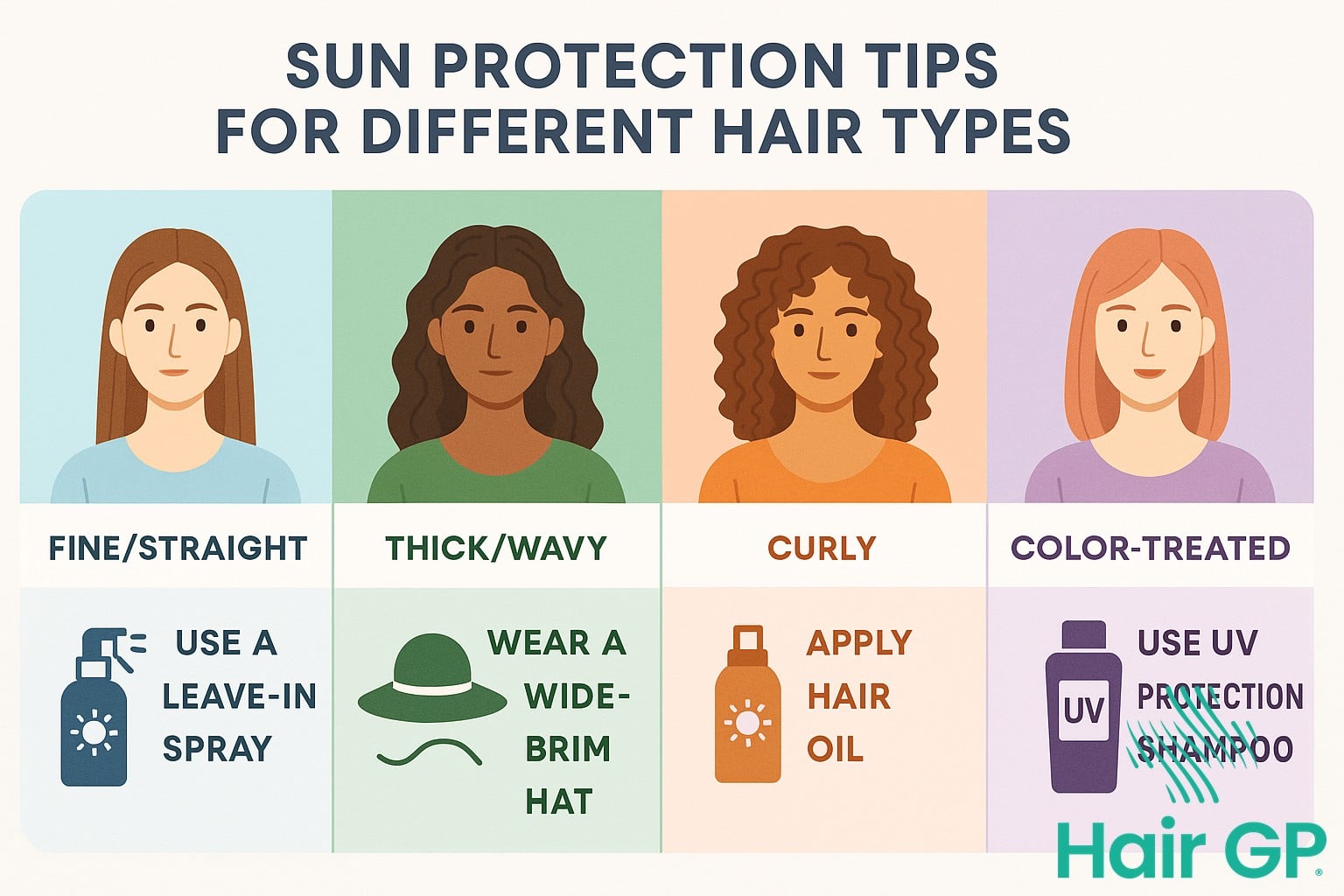
Conclusion
Effective sun protection for your scalp isn’t just a summer priority—it’s essential throughout the year to protect hair and maintain overall scalp health. By implementing consistent strategies like wearing protective headwear, using SPF hair products, and seeking shade during peak hours, you’ll avoid burning whilst keeping your hair healthy and vibrant. These simple habits protect against immediate damage and provide long-term benefits, preventing premature ageing, hair loss, and potential skin concerns. Make scalp sun protection part of your daily routine, regardless of the season, and enjoy healthier, more resilient hair for years to come.
Frequently Asked Questions
Yes, but spray or powder formulations work better for scalp application without making hair greasy. Look for lightweight, non-comedogenic formulas designed for scalp use, or opt for mineral-based sprays that won’t weigh down your hair.
Reapply every 2 hours when outdoors, or immediately after swimming or excessive sweating. If wearing a hat consistently, you may not need to reapply as frequently, but exposed areas like your hairline and neck still need regular reapplication.
Quality sun protection products are designed to preserve hair color. In fact, UV protection helps prevent color fading. Look for color-safe formulas and avoid products with high alcohol content, which can strip color.
Wide-brimmed hats (3+ inches) offer the best protection for scalp, face, and neck. Choose tightly woven fabrics with UPF ratings. Baseball caps protect the top but leave ears and neck exposed, so combine with sunscreen.
References
- Corrêa Mde P. Solar ultraviolet radiation: properties, characteristics and amounts observed in Brazil and South America. An Bras Dermatol. 2015. PMID: 26131858
- Tas F, Erturk K. Scalp melanoma is associated with high mitotic rate and is a poor prognostic factor for recurrence and outcome. Melanoma Res. 2017. PMID: 28234768
- Fernández E, Barba C, Alonso C, Martí M, Parra JL, Coderch L. Photodamage determination of human hair. J Photochem Photobiol B. 2012. PMID: 22119660

